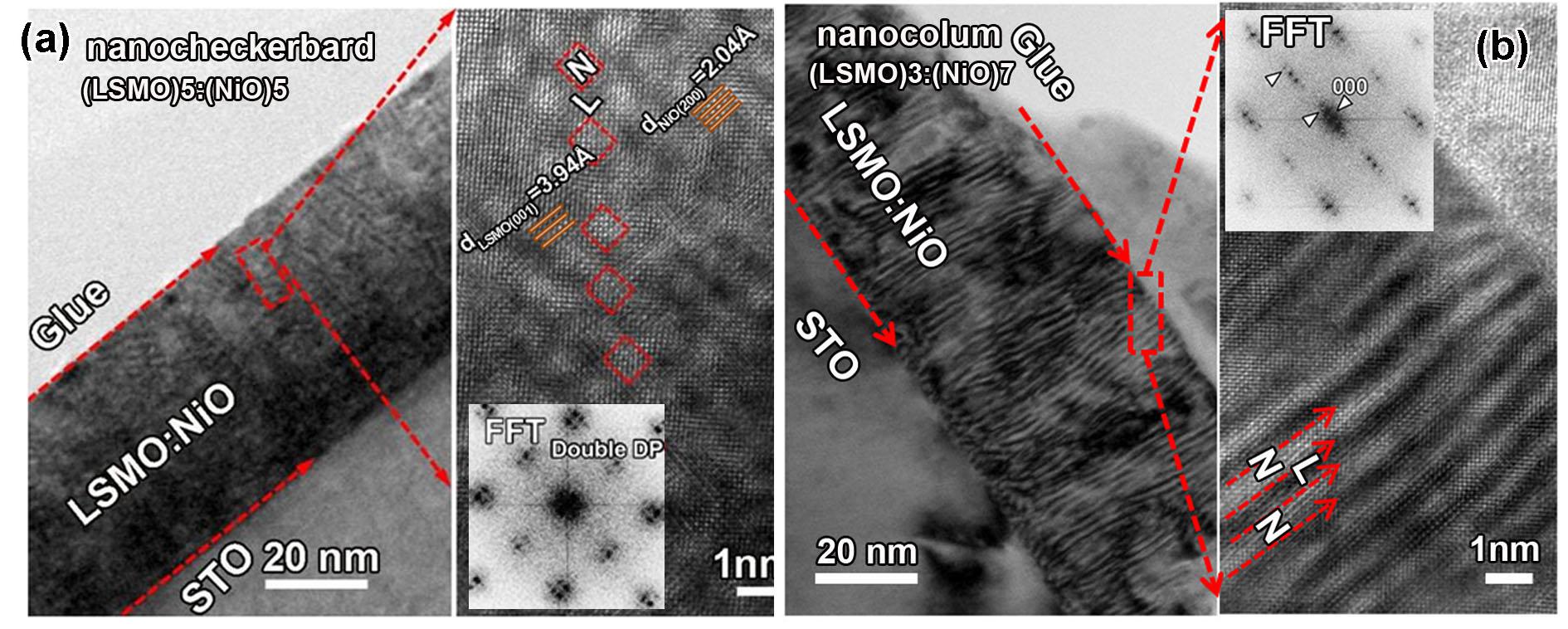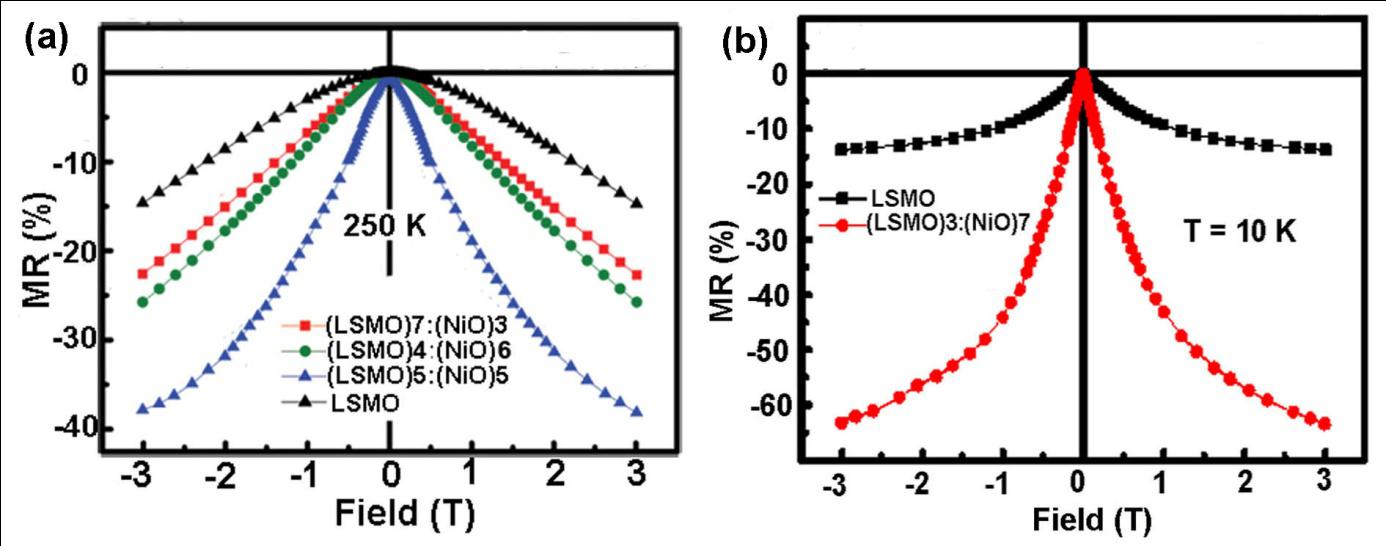
La0.7Sr0.3MnO3:NiO Nanocomposite Films with Large, Temperature Tunable Low-field Magnetoresistance |
|
Giant magnetoresistance (GMR) has been widely applied in the memory-readers of digital device, magnetic random access memory and magnetic sensors and other microelectronic components. In the past few years the extrinsic low-field magnetoresistance(LFMR) effect, induced by spin-polarized tunneling at the grain boundaries, has stimulated considerable interest as it constitutes a relatively large MR effect in the low magnetic field. In polycrystalline LSMO, LFMR has been obtained by structuring grain boundaries, artificial grain boundaries, nanosized inclusions, and atomic-sized defects. However, the enhanced LFMR always display in a low temperature range (0-150 K), thus their LFMR has not been applied yet. That maybe due to the large grain size in polycrystalline films (¡Ö¦Ìm) or weak spins coupling at the phase boundaries in the composite thin films. Systems featuring a large LFMR at temperatures close to or even higher than room temperature are also interesting owing to their potential applications in magnetic field sensing and data storage. Our recent studies have established that in La0.7Sr0.3MnO3 (LSMO):NiO composite films, the interaction between Ni2+and Mn4+ gives rise to magnetic regions that pin the ferromagnetic La0.7Sr0.3MnO3 (LSMO) layer. The short range ferromagnetic (FM) coupling order may add the opportunity of spin scattering which will enhance the LFMR and tune temperature range. Thus, we deposited epitaxial LSMO:NiO compositethin films by pulsed laser deposition (PLD) on (001)-SrTiO3 substrates with different growth modes. The LSMO:NiO nanocomposite films with NiO volume ratio of 50% noted as (LSMO)5:(NiO)5 have a checkerboard-like structure and show a large LFMR in a temperature range from 200 to 300 K (¡Ö17% at 250 K with a magnetic field of 1T). As the NiO volume ratio is increased to 70%, a nano-columnar structure formed in the films (noted as (LSMO)3:(NiO)7). Their LFMR is significantly enhanced at a wide temperature range of 10¨C210 K. The highest value of LFMR with 41% is achieved at 10 K in a magnetic field of 1 T. The enhanced LFMR can be considered to result from the electron scattering at the ferromagnetic LSMO/NiO interfaces and magnetic tunnel junctions (MTJs) of LSMO/NiO/LSMO at the nanometer scale. Additionally, tuning the spatial distribution of these MTJs by modulating the microstructure in the composite thin films can effectively change the conducting networks which determine the total electron transport properties. Thus, the geometrical arrangements of the ferromagnetic LSMO/NiO interfaces and MTJs of LSMO/NiO/LSMO in these composite films are very important for enhancing the LFMR properties. A series parallel circuit model is proposed to understand the effect of microstructures on the LFMR value and its working temperature. These results demonstrate that large and tunable LFMR from low temperature to room temperature can be realized by controlling the microstructures in the epitaxial LSMO:NiO nanocomposite thin films, which will be expected to be applied in the devices using for a wide temperature range.
Fig (a) A cross-sectional TEM image of (LSMO)5:(NiO)5 composite film with a checkerboard-like structure and the corresponding HRTEM image (the inset is its FFT pattern). (b) A cross-sectional TEM image of(LSMO)3:(NiO)7 composite film with a nano-columnar structure and the corresponding HRTEM image (the inset is its FFT pattern).
Fig: (a)Magneticfield dependent MR% for the (LSMO)7:(NiO)3, (LSMO)5:(NiO)5and(LSMO)3:(NiO)7 nanocomposite films, and the pure LSMO films. (b) Magnetic field dependent MR% for the (LSMO)3:(NiO)7 nanocompositefilms at 10 K.
|
|

